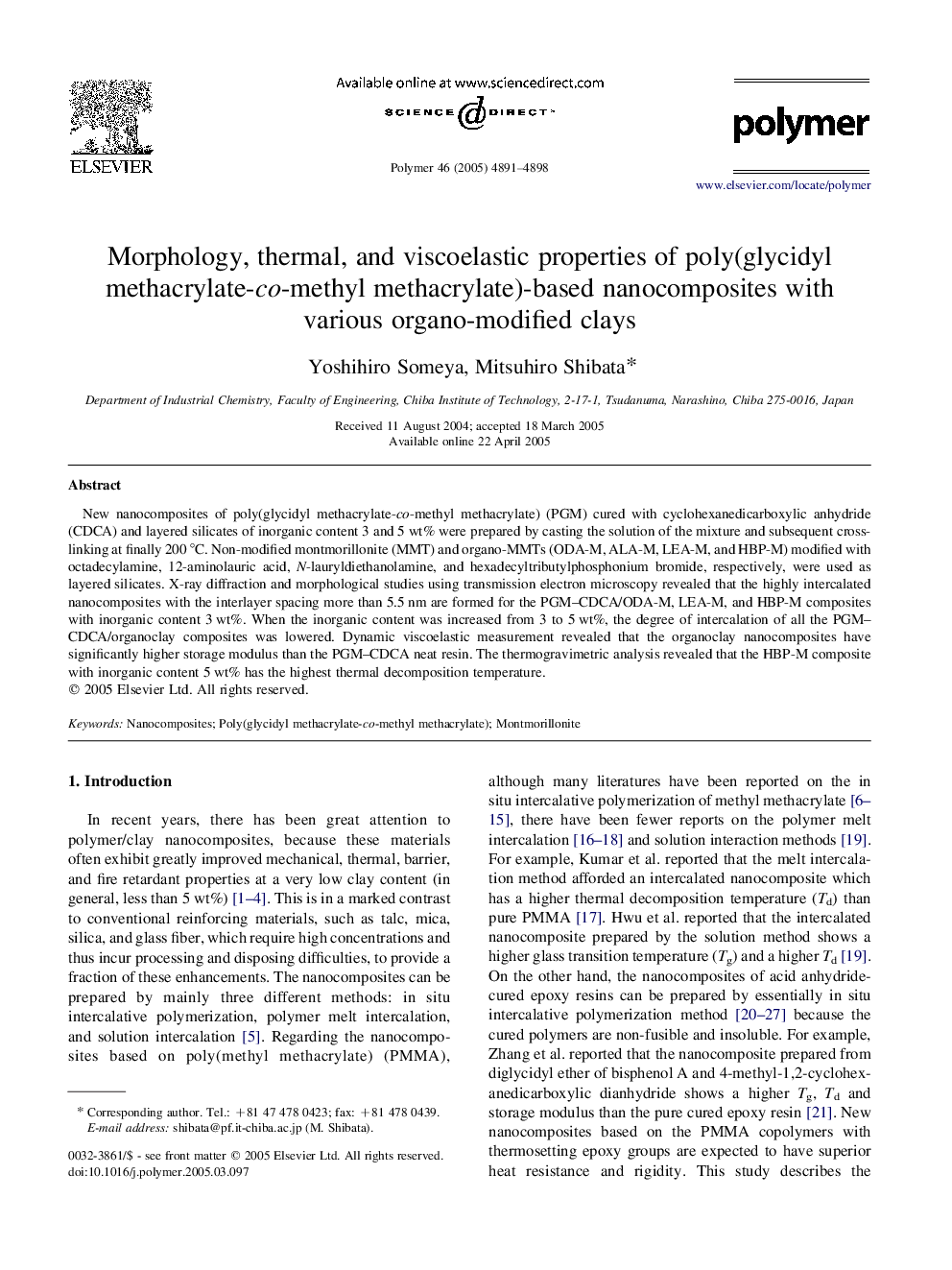| Article ID | Journal | Published Year | Pages | File Type |
|---|---|---|---|---|
| 5191654 | Polymer | 2005 | 8 Pages |
Abstract
New nanocomposites of poly(glycidyl methacrylate-co-methyl methacrylate) (PGM) cured with cyclohexanedicarboxylic anhydride (CDCA) and layered silicates of inorganic content 3 and 5 wt% were prepared by casting the solution of the mixture and subsequent cross-linking at finally 200 °C. Non-modified montmorillonite (MMT) and organo-MMTs (ODA-M, ALA-M, LEA-M, and HBP-M) modified with octadecylamine, 12-aminolauric acid, N-lauryldiethanolamine, and hexadecyltributylphosphonium bromide, respectively, were used as layered silicates. X-ray diffraction and morphological studies using transmission electron microscopy revealed that the highly intercalated nanocomposites with the interlayer spacing more than 5.5 nm are formed for the PGM-CDCA/ODA-M, LEA-M, and HBP-M composites with inorganic content 3 wt%. When the inorganic content was increased from 3 to 5 wt%, the degree of intercalation of all the PGM-CDCA/organoclay composites was lowered. Dynamic viscoelastic measurement revealed that the organoclay nanocomposites have significantly higher storage modulus than the PGM-CDCA neat resin. The thermogravimetric analysis revealed that the HBP-M composite with inorganic content 5 wt% has the highest thermal decomposition temperature.
Keywords
Related Topics
Physical Sciences and Engineering
Chemistry
Organic Chemistry
Authors
Yoshihiro Someya, Mitsuhiro Shibata,
